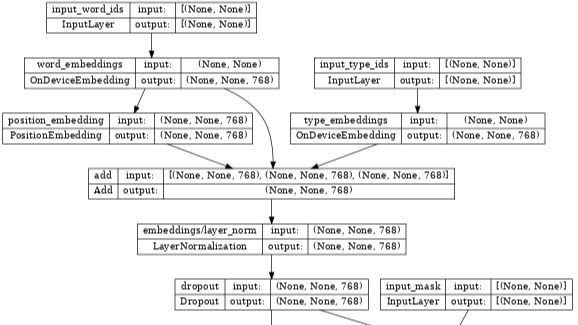Has the pursuit of decentralized security in blockchain reached a pivotal moment, and can a single application redefine the industry’s understanding of trust? Cartesi, a modular blockchain protocol, introduced an upgraded iteration of its Honeypot decentralized application, aiming to advance rollup security standards. This release positions Cartesi among a select group of projects maintaining Ethereum L2 status under the updated criteria established by L2Beat, an open-source analytics platform for Layer-2 solutions.
Cartesi’s Approach to Rollup Security
The newly integrated Permissionless Refereed Tournaments (PRT) fraud-proof system within Honeypot signifies Cartesi’s focus on secure and transparent development. This advancement places Cartesi in contention for “Stage 2” status in L2BEAT’s recategorization process. L2BEAT assesses projects based on their proof systems, which are mechanisms designed to verify rollup data, ensuring secure settlement on the Ethereum mainnet. Stage 2 represents a critical phase where rollups transition to being fully managed by smart contracts, reducing reliance on external oversight.
Honeypot, initially launched on the Ethereum mainnet two years ago, was conceived as a “hacking challenge based on the concept of honeypots.” This design transforms the process of testing rollup security into a community-incentivized audit, fostering a gamified environment for identifying vulnerabilities. The integration of PRT strengthens this approach by providing a fraud-proof system that resists Sybil attacks. Sybil attacks involve a single entity creating multiple false identities to gain a disproportionate influence over a network. PRT addresses this by not relying on permissioned validators, which are specific entities granted authority to validate transactions, or on heavy hardware requirements, making the system more accessible and resistant to manipulation.
The Significance of Permissionless Refereed Tournaments
The implementation of a fully permissionless fraud-proof system, which does not depend on a gated multisig for interventions, is a key aspect of Honeypot’s upgrade. A gated multisig requires multiple pre-approved parties to sign off on any action, introducing a potential point of centralization. By removing this dependency, Cartesi’s Honeypot is expected to be directly recategorized as Stage 2. This represents the final stage where the entire rollup operation, including its security mechanisms, is controlled by smart contracts, moving towards a truly trustless environment.
Erick de Moura, founder at Cartesi, stated, “We do not expect trust to be given, it should be earned. Honeypots allow projects to commit their own funds to validate the integrity of their fault proofs before asking others to rely on them. It is a gradual, transparent path toward trustless security that reflects the values this ecosystem was built on.” This statement underscores Cartesi’s belief in demonstrable security through real-world testing and transparent processes. The concept of “fault proofs” refers to mechanisms that allow participants to challenge incorrect computations or data within a rollup, ensuring that only valid transactions are settled on the mainnet.
Looking Ahead: The ‘Dave’ System and Industry Impact
Ethereum founder Vitalik Buterin has recently emphasized the necessity for all Layer-2 solutions to adopt robust fraud-proof mechanisms. Cartesi’s Honeypot upgrade aligns with this directive, signifying a progression in its rollup technology as it approaches Stage 2. This development suggests a maturation of the protocol’s capabilities in providing a secure environment for decentralized applications. The team has indicated that it is developing the next-generation ‘Dave’ fraud-proof system, which aims to further enhance the security framework.
Cartesi’s work aims to bridge the gap between conventional software development and blockchain technology. The project provides developers with access to a range of existing operating systems, programming languages, software libraries, and tools. This approach intends to facilitate the creation of new blockchain applications by leveraging established development paradigms, potentially accelerating innovation within the decentralized ecosystem.
Final Outlook
The launch of Cartesi’s upgraded Honeypot dApp with the PRT fraud-proof system appears to be a significant step in the ongoing quest for robust decentralized security. The emphasis on permissionless mechanisms and the direct path towards L2BEAT’s Stage 2 classification demonstrate a commitment to foundational blockchain principles. The stated intention to move beyond reliance on trusted validators and hardware requirements is a positive sign for the broader ecosystem, potentially fostering greater decentralization and resilience.
The community-driven, gamified approach to security testing through Honeypot itself offers an interesting model for uncovering vulnerabilities, leveraging collective intelligence. Coupled with Erick de Moura’s clear stance on earning trust through demonstrable integrity, Cartesi’s actions appear to align with a more transparent and verifiable path to security. As the blockchain space continues to mature, the development of systems like PRT and the anticipated ‘Dave’ fraud-proof system will be critical in building a more secure and trustworthy foundation for decentralized applications. The impact of such advancements extends beyond Cartesi, potentially setting a precedent for other Layer-2 solutions seeking to achieve true decentralization and security.
Don’t forget to like and share the story!










